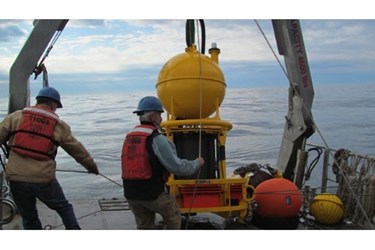NOAA Awards $2.1M To Improve Observation, Forecasting, And Mitigation Of Harmful Algal Blooms And Hypoxia

12 projects to aid coastal resilience, safeguard the public, ecosystems and coastal economies
NOAA announced recently 12 new research grants totalling nearly $2.1M that will go to organizations from around the country seeking to address harmful algal blooms (HABs) and hypoxia, two of the most scientifically complex and economically damaging coastal issues.
Hypoxia and harmful algal blooms have become a national concern. Outbreaks of toxic algal blooms along the Pacific coast have shut down commercial and recreational shellfishing in portions of three states. Also, the large oxygen-depleted “dead zone” in the Gulf of Mexico imperils valuable commercial and recreational fisheries, and the persistent Lake Erie bloom has threatened public water supplies and the area’s $12.9B tourism industry.
“Understanding and predicting if an algal bloom will become toxic remains one of the biggest technical challenges,” said Mary Erickson, director of NOAA’s National Centers for Coastal Ocean Science,which is providing the funding. “These projects will help communities and agencies understand, detect, and predict toxic algae and hypoxia. They are part of a larger NOAA effort to develop a national network of ecological forecasts to protect communities and make them more resilient to these threats.”
The grants will allow these organizations to implement new monitoring technologies to address emerging HABs, and investigate the role of climate change, nutrient pollution, and other factors to better predict and manage blooms. They will also improve upon current monitoring and seasonal forecasting for HABs, as well as apply robotic technology to improve hypoxia monitoring. A list of the grants can be found here.( http://www.noaanews.noaa.gov/stories2015/091715-noaa-awards-2.1-million-to-improve-observation-forecasting-and-mitigation-of-harmful-algal-blooms-and-hypoxia_grants.html)
“Advancing NOAA’s ecological forecasting initiatives depends on sound science-based information that private and public officials need to make critical decisions to protect public health, understand environmental impacts, and mitigate economic damages to activities that are a vital part of the region’s economy,” said Russell Callender, Ph.D., acting assistant NOAA administrator for the National Ocean Service.
Every U.S. coastal state has suffered a bloom of harmful algae over the last decade, and species have emerged in new locations that were not previously known to have problems. A small percentage of blooms produce toxins or grow excessively, threatening the coastal environment posing human and animal health threats. HAB toxins may kill fish or shellfish directly and can lead to illness and death in some marine birds and mammals, including humans.
During blooms, shellfisheries are monitored for HAB toxins and sometimes closed to protect human health. Even blooms that are not toxic can cause damage by suffocating fish, blocking light from bottom-dwelling plants, or depleting the oxygen in the water.
Hypoxia, or low oxygen, can occur naturally but is often caused by poor water quality from human activities, such as excessive nitrogen or phosphorus pollution from agriculture fertilizer runoff, sewage, urban runoff, or other practices. Today, more than half of the studied U.S. estuaries have experienced hypoxia.
The National Centers for Coastal Ocean Science delivers ecosystem science solutions for NOAA’s National Ocean Service and its partners, bringing research, scientific information and tools to help balance the nation’s ecological, social and economic goals.
About NOAA’s
NOAA’s mission is to understand and predict changes in the Earth’s environment, from the depths of the ocean to the surface of the sun, and to conserve and manage our coastal and marine resources.
Source: NOAA
